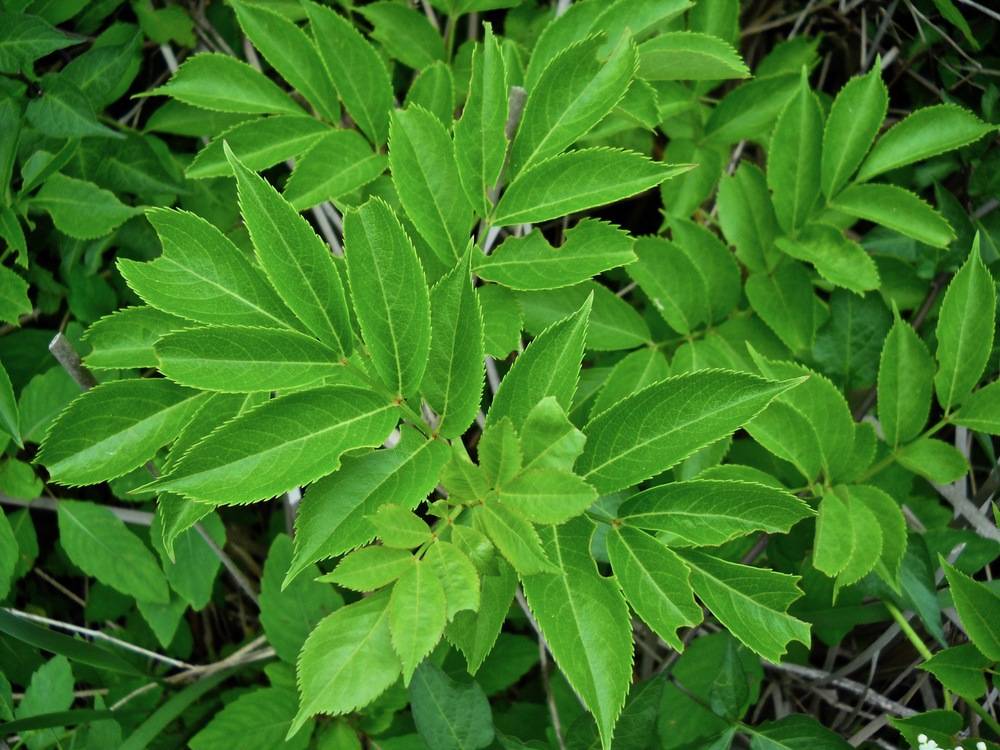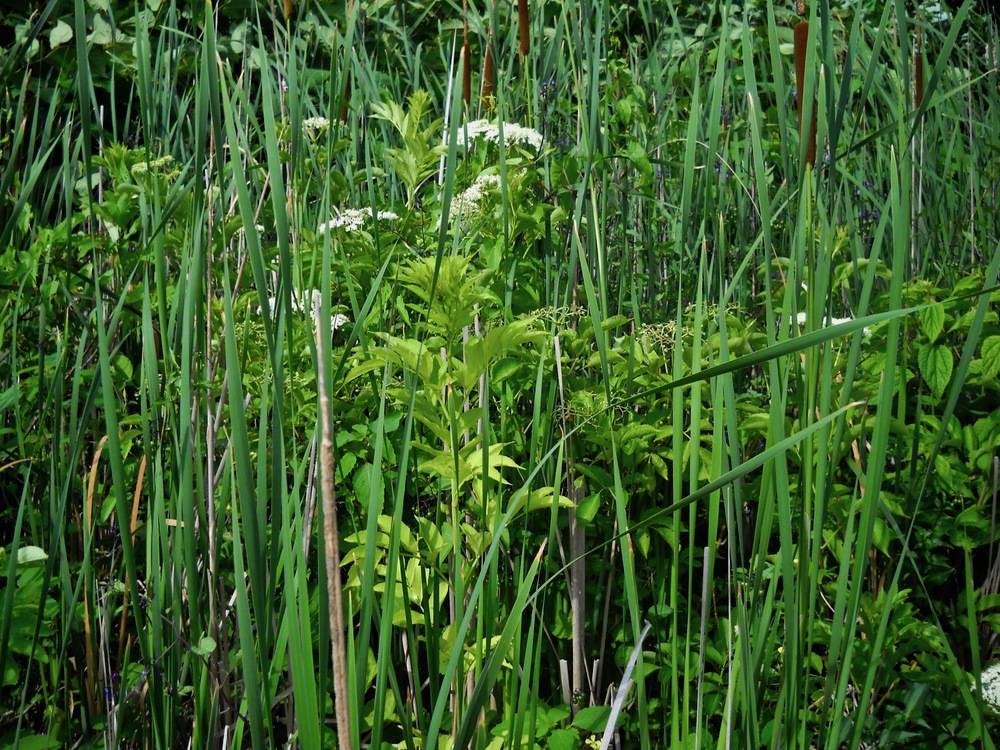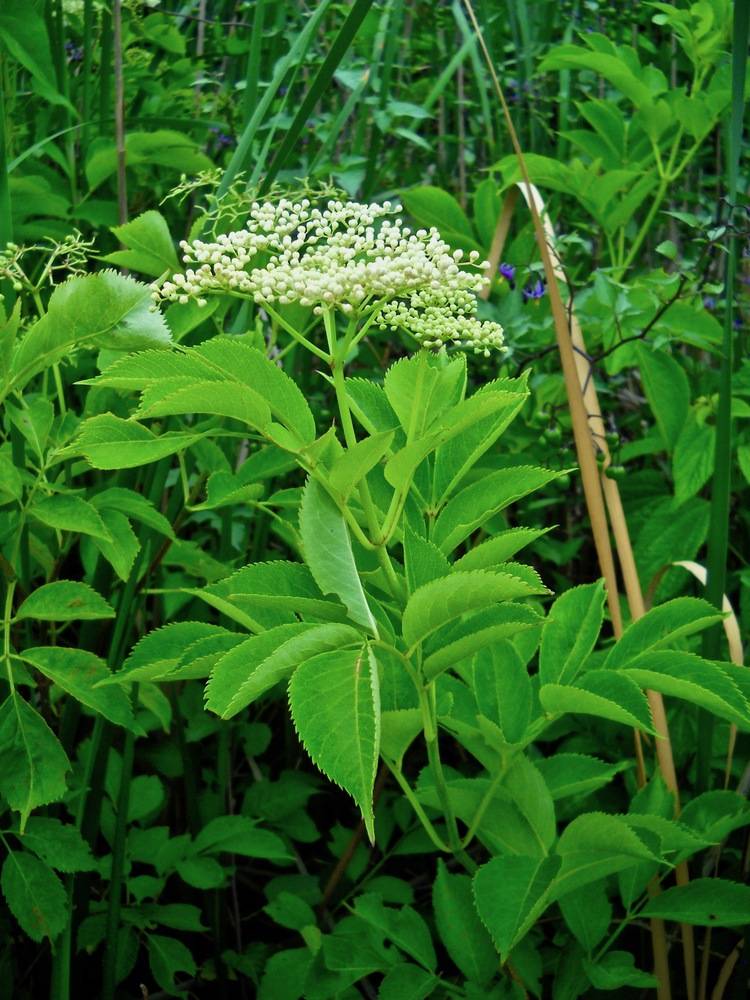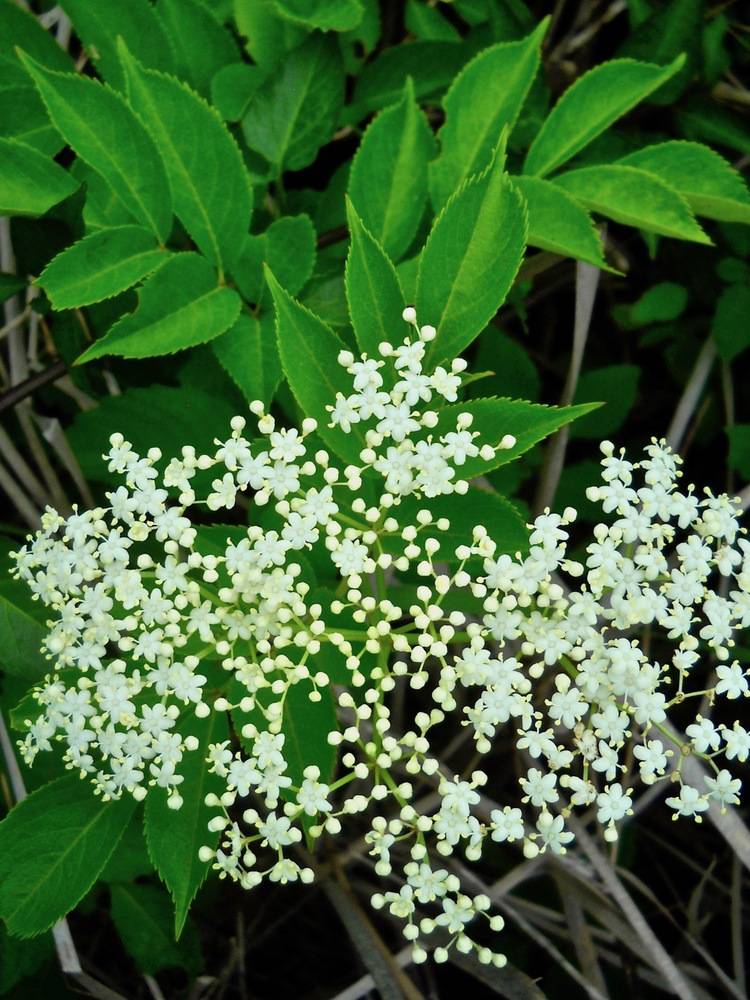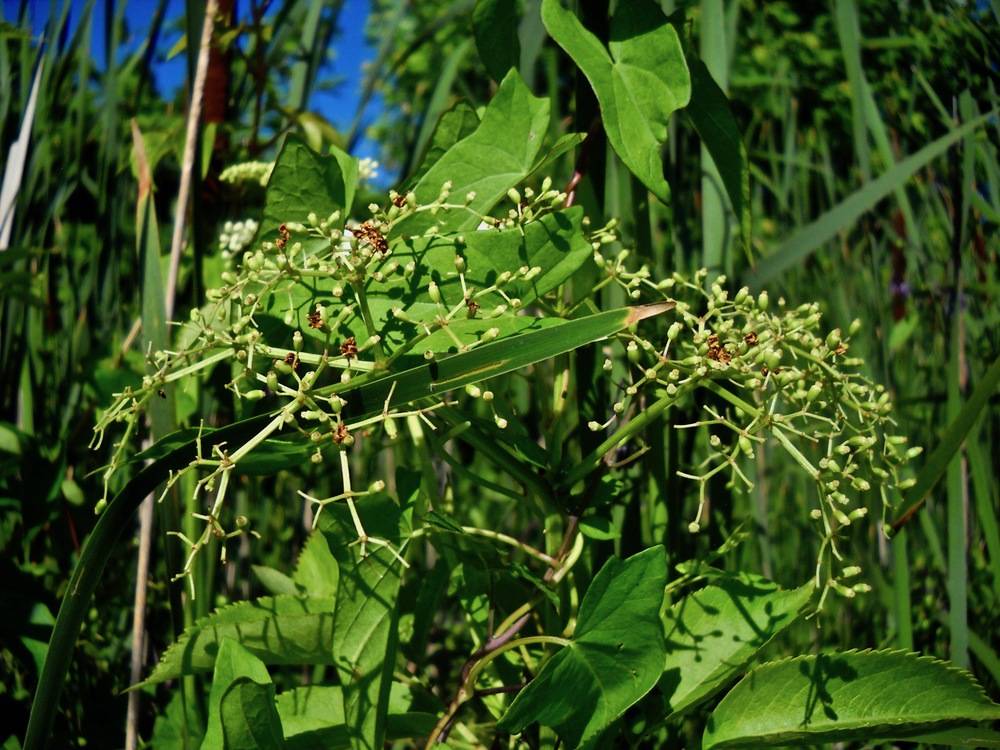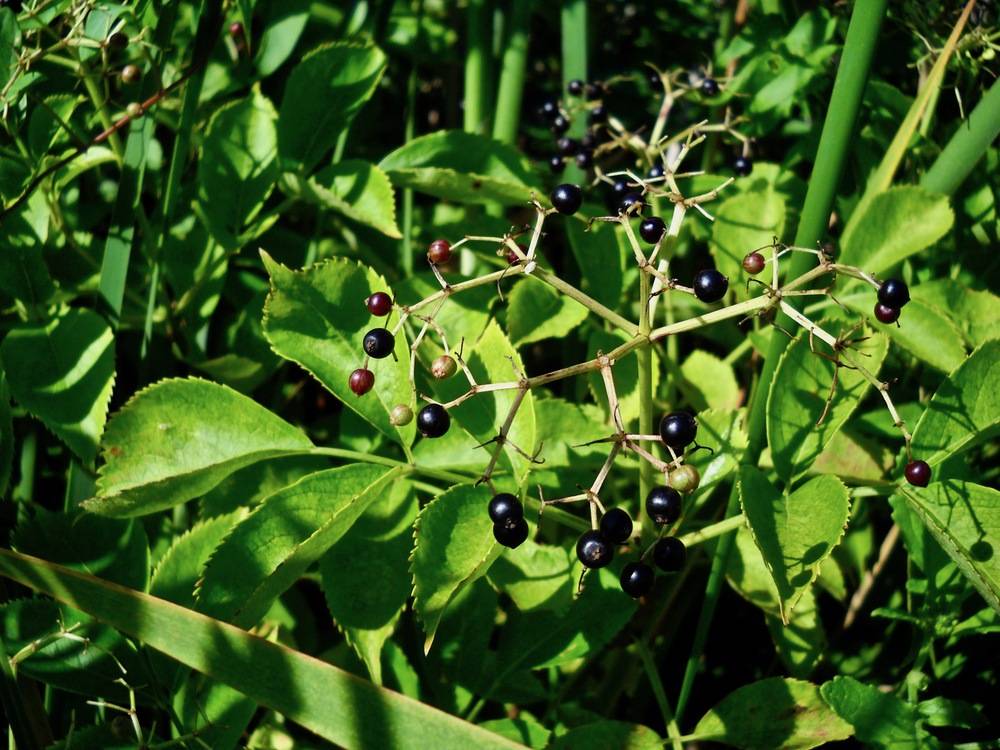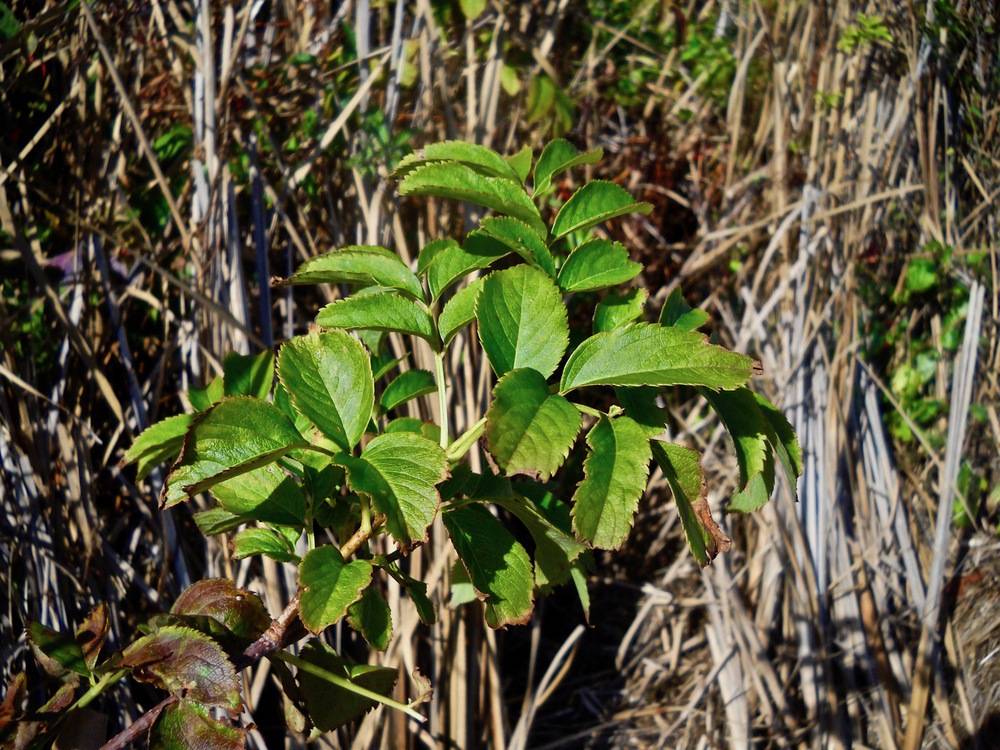black elderberry
Black elderberry occurs naturally in both North America and in Europe but has also been planted as an ornamental or in hedgerows. It will grow as a shrub or small tree in dry or wet conditions as long as the soil is fertile and there is plenty of sunlight. Any particular plant is short-lived but has the ability to produce separate but clonal neighboring plants through underground rhizomes.
At Salter Grove, a small patch of black elderberry grows within a dense stand of narrow-leaved cat-tail at the southern end of Marsh Trail near trail marker M11.
Its compound leaves ought to stand out among the vertical leaves of the cat-tails but the plants are not conspicuous until the flat-topped clusters of white flowers appear. The showy flowers do not provide nectar, only pollen, but nonetheless attract bees, beetles and flies. However, given the abundance of flowers produced, it is puzzling that the black elderberry plants at Salter Grove produce so few fruits.
Black elderberry is considered poisonous to mammals, except for the flowers and fruits. Since its inclusion in writings by Hippocrates (considered the Father of Medicine), over 2,000 years ago, it continues to be a popular ingredient in various traditional European herbal remedies. A hot infusion of the flowers acts as a tonic and induces sweating. A cold infusion, on the other hand works as a diuretic, alterative or laxative. Alternatively, the flowers are made into fritters. The berries are used to make a syrup or cordial, or to flavor beer, brandy, and wine.
Native Americans across North America also developed various medicinal applications with black elderberry. Infusions of black elderberry were used as a diuretic to remove excess fluid from the body, or as an emetic to induce vomiting. The flowers were heated in lard to prepare a salve for treating skin conditions. A syrup was made from boiling down the berries to sooth sore throats. Leaves were used to wash sores to prevent infection. Ripe berries were processed as jams or into flour as food for the winter. Native Americans moreover used the hollow twigs for making arrow shafts or flutes.
There may be some basis for the widespread use of black elderberry as a remedy for so many ailments. Recent studies suggest that some chemicals in black elderberry are anti-inflammatory, and seem to stimulate antibody production. Clinical trials have also indicated relief for symptoms of influenza.
For more information:
https://gobotany.nativeplanttrust.org/species/sambucus/nigra/
https://www.illinoiswildflowers.info/trees/plants/cm_elder.htm
https://en.wikipedia.org/wiki/Sambucus_nigra
http://naeb.brit.org/uses/search/?string=sambucus+nigra
https://www.henriettes-herb.com/eclectic/hill/elder.html
https://theherbalacademy.com/the-benefits-of-elderberries-sambucus-nigra-and-sambucus-canadensis/
Coon, N. (1979). Using Plants for Healing. Rodale Press. p. 181.
Foster, F. and Johnson, R.L. (2006). Desk Reference to Nature’s Medicine. National Geographic Society. pp. 150-151.
Millspaugh, C.F. (1974). American Medicinal Plants. Dover Publications, Inc. pp. 295-298 (Original work published in 1892)
Richardson, J. (1981). Wild edible plants of New England: A field guide : including poisonous plants often encountered. DeLorme Pub. Co. pp. 164-165.

